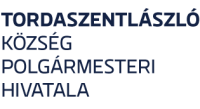
Gyurka Izabella-Katalin
ALPOLGÁRMESTER
Politikai Hovatartozás: RMDSZ
1980. augusztus 28-án születtem Kolozsváron.
1996 és 1999 között a kolozsvári Brassai Sámuel Elméleti Líceum diákja, majd 1999 és 2003 között a kolozsvári Babes-Bolyai Tudományegyetem, Protestáns Teológiai Fakultás, református vallás- magyar nyelv és irodalom szakos hallgatója voltam.
2011-ben véglegesítő vizsgát tettem, 2019-ben II. fokozati, 2022-ben pedig – I. fokozati képesítést szereztem.
Hivatásom, foglalkozásom: tanár.
Az egyetem elvégzését követően, a következő tanintézményekben tanítottam:
Visai Általános Iskola, Nagykapusi Óvoda, Lónai Óvoda, Tordaszentlászlói Óvoda, Tordaszentlászlói Borbély József Általános Iskola, Lónai Általános Iskola. Jelenleg a kolozsvári Báthory István Elméleti Líceum tanára vagyok.
Házas vagyok, egy gyermek édesanyja.
Politikai pályafutásom 2009-ben kezdődött, ekkor léptem be az RMDSZ tordaszentlászlói szervezetébe, eleinte választmányi tagként, később a szervezet titkáraként vettem rész a közösségi munkában. Tagja vagyok a Thamó Gyula Egyesületnek. Hat éven át tagja voltam a Tordaszentlászlói Református Egyházközség presbitériumának, és a helyi egyházi kórusban is tevékenykedtem.
2016-2019 között a közösségben végzett munkám eredményeként helyi tanácsosi megbízatást kaptam. Ez idő alatt az RMDSZ nőszervezetének is tagja voltam.
A helyi tanácsban minden olyan témát, kérdést képviseltem, amely közösség javát szolgálta. Felsorolhatatlanul sok ilyen ügy volt, ebből nehéz szelektálni, hisz mindegyik a maga idejében fontos szerepet töltött be.
2022 óta töltöm be az alpolgármesteri tisztséget. Feladatkörömbe tartozik a Supercom céggel való kapcsolattartás, az ingyenes telekelés ügye, a CTP-busztársasággal való kapcsolattartás, a legelők kérdése, és más ügyek.
Jelenleg az alábbi Deák Ferenc-idézet foglalja össze leginkább mindazt, ami jellemez:
Van egy hű barátom, kinek szava még a közvélemény szavánál is fontosabb előttem, kivel én soha nem alkuszom, mert parancsait szentnek tartom, s kinek neheztelését magamra nézve a legsúlyosabb csapásnak tekinteném, és ezen hű barátom: önlelkiismeretem.


